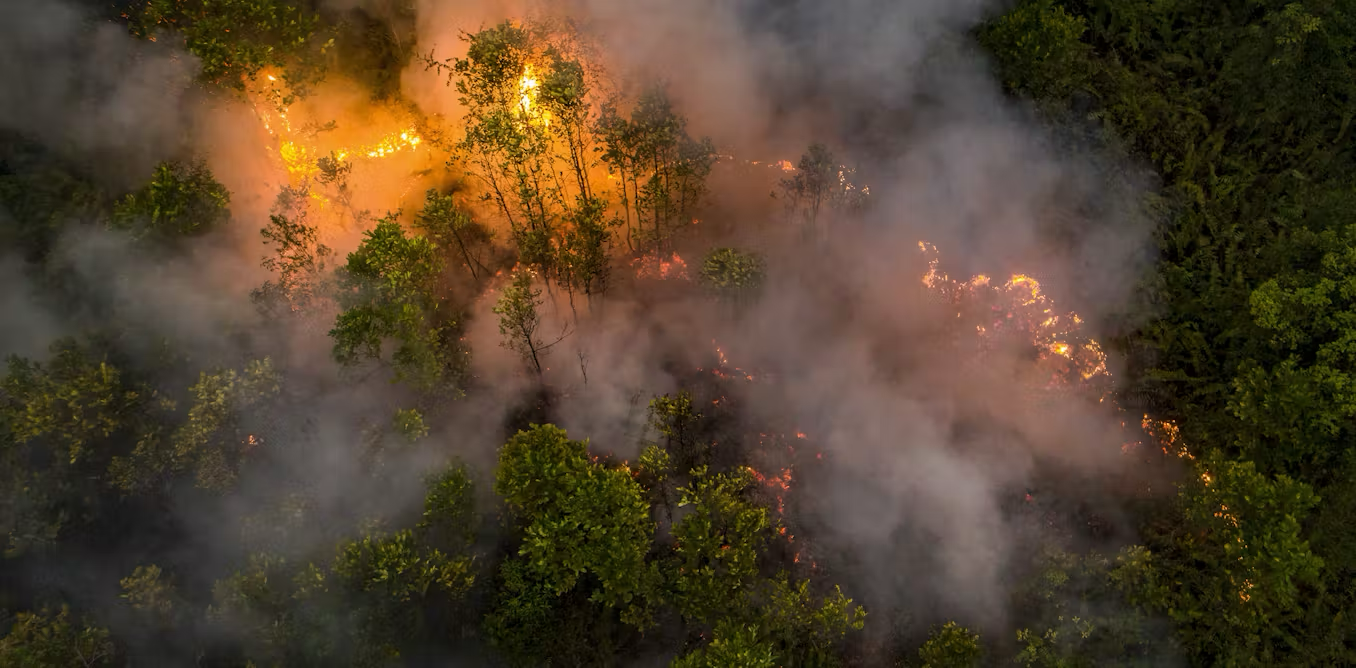Mapbiomas Indonesia | FIRE 1.0 presents data and maps on burned area in Indonesia throughout 2013–2023, secured by analyzing Landsat 8 satellite imagery through a deep learning Deep Neural Network (DNN) computerization process. The DNN model maximizes artificial intelligence and machine learning algorithms to classify complex phenomena in the interests of higher performance, including in the mapping of burned areas (Langford, 2018).
Satellite images are processed in the Google Earth Engine (GEE) to generate mosaics for use in measuring burned area (and non-burned area) spectral values, which are then made the bases for the collection of training samples. Both training samples and mosaics are stored in Google-based storage (Google Drive) for subsequent downloading to a local server. The training samples then become material for training DNN to recognize burned areas in the mosaics.
This approach combines the capacity of deep learning to scan satellite images comprehensively to generate detailed and reliable maps of burned areas in Indonesia. Image processing classification procedures for mapping these burned areas involve the following stages:
- Region determination: This is done to increase the accuracy of the classification process, particularly bearing in mind the existence of specific characteristics for burned areas in each region. During this stage, Indonesia is divided into seven regions: Sumatra, Java, Kalimantan, Bali-Nusa Tenggara, Sulawesi, the Moluccas, and Papua.
- Mosaic construction: All Landsat 8 satellite images from 2013–2023 are processed to become high-quality annual mosaics. These mosaics, which are placed in a local server, are used as datasets in the classification process.
- Training sample collection: Burned area representations (samples) are gathered from the mosaics. In the next stage, deep learning processes are trained to recognize burned areas through these samples, which are frequently called training samples.
- Classification: The DNN model is trained (deep learning) to recognize samples using burned area spectral values for each one. The model is then applied to annual mosaics to identify burned areas in the mosaic’s time period.
- Post-classification: This stage involves visual inspection of identified areas. If these are deemed unconvincing and/or inaccurate, processes from stage 3 above are repeated. Such repetitions continue until identified areas are visually convincing. Next, various filters, either spatial or with specific characteristics (masks), are applied to identified areas to increase accuracy and reduce errors (noise).
- Validation: Identified areas are validated by comparing them with data/reference maps. Visual checks are conducted on disagreement areas to determine the accuracy of their identification.


